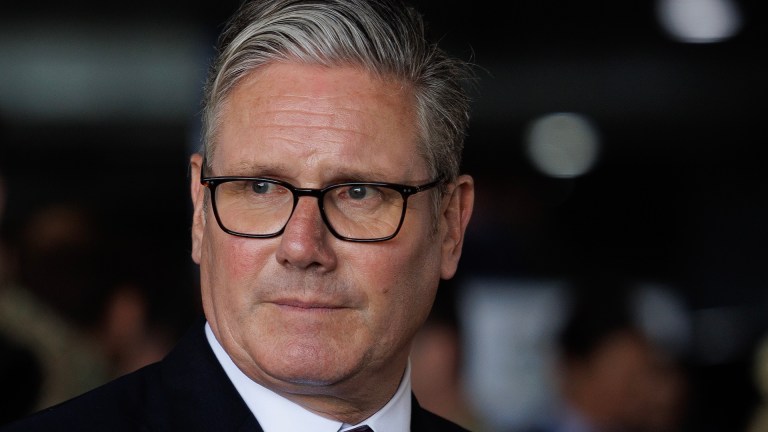Charities insist they cannot become normalised in the way food banks have, and that the government needs to find long-term solutions to poverty.
Until then, here’s everything you need to know about warm banks, including where to find them, why they are needed in the cost of living crisis, how to help and the potential drawbacks.
What is a warm bank?
Warm banks are safe places with the heating on, where people can go to get warm in the winter if they cannot afford to heat their homes. They are run by local councils, charities, museums, libraries, NHS services, local businesses and other organisations across the country.
As the cost of living crisis grinds on, warm spaces provide vital respite from the weather as well as other services – some offer food, warm clothes or entertainment.
Last year, 93% of libraries across England, Wales and Northern Ireland acted as a warm space.
“It’s a safe, non-judgemental space, and it’s free,” Mandy Grimwood, library manager at Gainsborough Community Library in Suffolk, says. “We’re already a community hub, so there’s no stigma attached to coming in. Anyone can access it no matter what.”
Advertising helps fund Big Issue’s mission to end poverty
How do warm banks work?
Anyone can go along to a warm bank for free, and it is a safe space with the heating on where you can stay for as long as it is open. You don’t have to tell anyone why you are there, and there will be no judgement.
Warm banks are typically held in community spaces which are open to the public anyway and double up as warm spaces, such as libraries, where you can go and take a look at the books, use the computers, or simply sit and enjoy the warmth.
Libraries which act as warm banks offer a “vast array” of services, explains Karen Pugh, senior libraries manager for Caerphilly County Borough Council. Some warm banks offer hot drinks, food and more.
“Reading and learning are our bread and butter, but we’re more than that, now. We’ve changed and evolved to meet new needs,” Pugh says.
Why are warm banks needed?
The bleak reality is the cold kills. Around 10,000 people die each year from health conditions arising or worsening from having a cold home, according to National Energy Action.
The charity estimates that six million people will face fuel poverty this winter and will be unable to afford their energy bills.
Advertising helps fund Big Issue’s mission to end poverty
“Parents come in telling us they can’t afford to keep their children warm,” said Grimwood, the manager of Gainsborough Community Library. “They were really worried about what they were going to do.”
Although energy bills are less than they were at the height of the cost of living crisis, they remain much higher than pre-pandemic levels and the support is limited.
The energy rebate which gave people a discount of £400 on their bills over the winter months was not offered last year, and the last cost of living payments hit bank accounts in February.
Meanwhile, the Labour government has decided to restrict winter fuel payments to those in receipt of pension credit and other means-tested benefits.
Those just on the threshold will miss out on the sum of up to £300 which is meant to help pensioners afford to cover their heating bills.
Which organisations are running warm banks?
Many councils across the country run warm banks, or at least work with community organisations to provide warm spaces for residents.
Advertising helps fund Big Issue’s mission to end poverty
It started at the height of the cost of living crisis in 2022 with a few councils coming up with a plan – including Bristol, Aberdeen, Birmingham and Dundee – and many more followed.
The warm banks can be found in public buildings like libraries, museums and community halls. They are also being run by independent charities, small businesses and campaign groups who want to do their bit to help. Most libraries are acting as warm spaces this winter.
The campaign Warm Welcome is also helping churches, community groups, businesses and councils set up warm banks. It was set up by a number of charities including Christians Against Poverty and Stewardship in association with ChurchWorks, a network of churches which joined together to help communities during the pandemic.
Can libraries, museums and charities afford to run warm banks?
One concern raised by campaigners is that public spaces like museums and libraries will not be able to afford to pay the energy bills themselves. They will need additional funding from the government, councils, donors and the public to keep their warm banks open.
A spokesperson for the library and information association CILIP said two years ago that warm banks are an important initiative. But they warned: “As councils across the country feel the squeeze on budgets, there is renewed pressure to close or reduce local library services.
“It would be a terrible irony if, just as people need their library the most, they find it locked and shuttered for lack of funds. If we really want to help everyone everywhere, we should be building new libraries on every high street.”
Advertising helps fund Big Issue’s mission to end poverty
Despite increasing spending pressures, Caerphilly has managed to keep all 18 of its libraries open. Sadly, this makes it an anomaly. Spending on libraries has fallen by almost half (47.9%) since 2010. Between 2010 and 2019, more than 800 of the beloved institutions were forced to close across the country.
What are charities and campaigners saying about warm banks?
Campaigners and charities have warned the country could become over-dependent on warm banks, which offer emergency support rather than long-term solutions.
Matt Downie, Crisis chief executive, previously said: “It hardly needs stating that there should be no need for these facilities in 21st century Britain and that everyone should have the opportunity to have their own warm, safe home. Although it is commendable to see organisations try to help by setting them up, they can only ever be a short-term fix.”
David Barclay, campaign coordinator at Warm Welcome, said: “It’s tragic that Warm Welcome spaces are required, but it’s heartening to see organisations stepping up and working together to provide a joined-up, nation-wide response.
“We believe that a movement is stirring which can not just support people through this winter but also help us as a country change direction on poverty and destitution.”
A spokesperson for Fuel Poverty Action added: “Food banks, warm banks, postcode lotteries, people dying in ambulances waiting for hours outside hospitals, people considering suicide because they don’t know how they’ll heat their homes – all of this has been ‘normalised’ in a country where the government has prioritised profits, especially the profits of the energy corporations, over the money we need for our households and for services.”
Advertising helps fund Big Issue’s mission to end poverty
Simon Francis, End Fuel Poverty Coalition coordinator, said: “The nation’s over reliance on food banks should serve as a warning to the future that we cannot normalise warm banks as part of our lives.”
Where can I find my local warm bank?
Warm Welcome has launched a virtual map of warm banks, making it much easier to find one near you. All you need to do is type in your postcode and you’ll be able to find any warm banks registered with the campaign in your area.
Another way to find a warm bank near you is to look on your local council’s website or contact it directly. Even if it is not running a warm bank itself, it should be able to direct you to a charity or other community organisation which is offering support this winter.
What can you do to help set up warm banks?
If you can spare some money, you can donate to fundraisers launched by charities running food banks. You could also contact local charities to see if they need help – they may be looking for volunteers or donations of specific items like food and toiletries.
If you’re wanting to set one up yourself, check out the guidelines from the libraries association and Martin Lewis. You can also find advice on Warm Welcome’s website about how to register your warm space and get tips on setting one up.
Get the latest news and insight into how the magazine is made by signing up for the Inside Big Issue newsletter
Advertising helps fund Big Issue’s mission to end poverty










